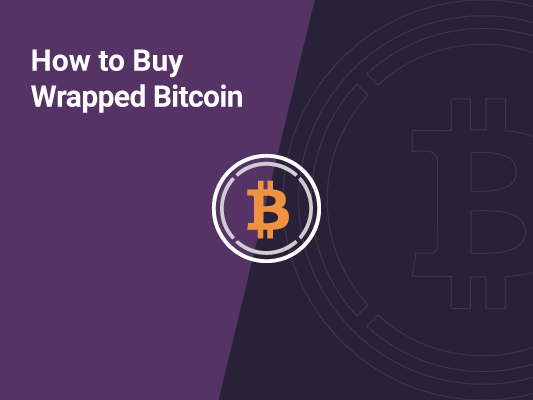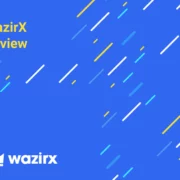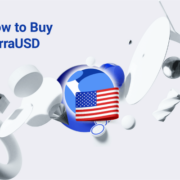
How to Buy Wrapped Bitcoin [Step-By-Step Guide]
WBTC or Wrapped BTC is the tokenized version of Bitcoin (BTC), hosted in the ETH blockchain and pegged to the value of the original coin in a 1:1 relationship. WBTC is the compatible version of Bitcoin with ERC-20 standards allowing you to trade BTC for other ERC-20 tokens without recurring to third parties.
The popularity of WBTC in Ethereum’s DeFi ecosystem has grown due to its use cases in decentralized finance (DeFi) protocols, including staking, investing, NFTs trading, yield farming, margin trading, providing liquidity to liquidity pools, and crypto lending.
Read on to learn everything you need to know about WBTC and how to buy Wrapped Bitcoin WBTC in a few easy steps.
Let’s jump right in!
Step #1: Select a Crypto Exchange
Wrapped Bitcoin (WBTC) tokens are available on a growing number of cryptocurrency exchanges. Visit the market page on CoinStats to view the exchange platforms supporting WBTC. Compare the exchanges’ security, user experience, fee structure, supported crypto assets, etc., to choose the one with the features you need, such as affordable transaction fees, top-notch security, high trading volume, an intuitive platform, round-the-clock customer service, etc. Also, consider whether the cryptocurrency exchange is regulated by the Financial Industry Regulatory Authority (FINRA) and allows you to buy WBTC using your preferred payment method.
To trade cryptocurrencies, you must use a centralized or decentralized crypto exchange, so let’s look into the details of each type below.
Centralized Exchange
A centralized crypto exchange or CEX, such as Coinbase, eToro, Binance, etc., functions as a middleman between buyers and sellers and charges specific fees for using their services. Most crypto transactions are conducted on centralized exchanges, allowing users to buy and sell cryptocurrencies for fiat currencies such as the US dollar or digital assets like BTC and ETH. Centralized exchanges require their users to follow KYC (know your customer) and AML (anti-money laundering) rules by providing some information and personal identification documents. However, the drawback of trading on a CEX is that it’s highly vulnerable to hacking or cybersecurity threats.
Decentralized Exchange
On the other hand, a decentralized exchange (DEX), like Uniswap, SushiSwap, Shibaswap, etc., is a non-centralized alternative to a centralized exchange and isn’t governed by any central authority. Instead, it operates over blockchain and charges no fee except for the gas fee applicable on a particular blockchain, i.e., on the Ethereum blockchain. Decentralized exchanges use smart contracts to let people trade crypto assets without needing regulatory authority. They deploy an automated market maker to remove any intermediaries and give users complete control over their funds. This method is safer since no security breach is possible. However, decentralized exchanges are less user-friendly in terms of interface and currency conversion. For instance, they don’t always allow users to trade crypto with fiat currency; users have to either already own crypto or use a centralized exchange to get crypto. Another drawback of decentralized exchanges is that it has failed to achieve liquidity levels comparable to centralized exchanges. It also takes longer to find someone looking to trade with you as DEX engages in peer-to-peer trade, and if liquidity is low, you may have to accept concessions on price and quickly sell or buy low-volume crypto.
You can list anything on a DEX, which means you have access to new, in-demand assets while also taking on more risk.
Step #2: Create an Account
After you’ve chosen a cryptocurrency exchange that suits your investment needs, you must register with the exchange using a valid email or mobile number. A link will be sent to your address, and you must click it to verify your account. Once the account is activated, you must create an elaborate password, and you’re good to go.
Some exchanges have strict KYC and AML requirements, and in order to get verified, you must provide personal information such as:
- Full name
- Residential address
- Date of Birth
- ID Document.
In some cases, you might also need to upload a selfie or undergo video verification to finalize the verification process.
Once your identity verification is complete, it’s recommended to activate two-factor authentication (2FA) for an extra layer of security.
Step #3: Deposit Funds
The next step is to deposit funds into your account. Many crypto exchanges support fiat currencies like USD, EUR, etc. Simply select your preferred deposit method, such as a bank transfer, wire transfer, credit or debit cards, e-wallets, PayPal, etc., and the currency you wish to deposit. Tap on “Deposit Funds,” enter the amount you want to deposit and click “Deposit.”
Some deposit methods are extremely fast, while others, depending on the amount, require a confirmation from authorities. Remember to evaluate the fees of different deposit methods since some have larger fees than others.
- Credit or Debit Card
Linking your debit card to your crypto account is advantageous as it lets you make instant or recurring purchases, but be aware that it attracts an additional fee.
- Bank Account
It’s usually free to make a bank transfer from your local bank accounts, but you should still double-check with your exchange.
- Cryptocurrency
WBTC can be traded for another cryptocurrency or a stablecoin; the trading pairs vary between exchanges. So, you must search for WBTC on the spot market to select a pair from the list of available trading pairs.
Step #4: Buy WBTC
Follow the steps below to place a market order to buy WBTC instantly at the current market price:
- Click the search bar, enter WBTC, and select “Buy WBTC” or the equivalent.
- Select a trading pair you wish to buy WBTC against.
- Choose the payment method, the currency you wish to use, and input the amount of WBTC or the fiat amount to be spent. Most exchanges will automatically convert the amount to show you how many WBTC tokens you’ll get.
- Double-check the transaction details and click “Confirm.”
- The WBTC tokens will be displayed in your balance once the transaction is processed.
You can also place a limit order indicating that you want to buy WBTC at or below a specific price point. Your broker will ask you the number of coins you wish to acquire and the maximum price you’re ready to pay for each once you’ve placed an order. The coins will only appear in your wallet if your broker fulfills your order at or below your requested pricing. The broker may cancel your order at the end of the day or leave it open if the price increases over your limit.
If you’re planning to keep your newly purchased coins for an extended period, we highly recommend securely storing them in a hardware wallet.
To trade UNI on spot markets, go to the Trade page and search for the WBTC pairs ( WBTC/USD or WBTC/USDT). Select the trading pair and check the price chart. Click “Buy WBTC,” select the “Market,” enter your amount or choose what portion of your deposit you’d like to spend by clicking on the percentage buttons. Confirm and click “Buy WBTC.”
Congratulations on adding Wrapped Bitcoin (WBTC) to your crypto portfolio!
How to Buy WBTC on CoinStats?
Did you know that you can buy WBTC directly on CoinStats with 0 additional fees? It’s super quick and secure and allows you to buy crypto with your credit card right where you track and manage it. Here’s how you can buy WBTC on CoinStats on web and mobile in a few simple steps.
- Head over to the CoinStats homepage
- Navigate to the Cryptocurrencies tab in the menu bar above and pick your desired cryptocurrency.
- Click Buy Crypto
- Select a portfolio or add a wallet address where the funds will be deposited
- Choose MoonPay as the provider
- Add the credentials of your payment method
- Complete the payment
Store WBTC
While your WBTC tokens can be stored in your brokerage exchange wallet, experts highly recommend storing your precious coins away from exchange wallets, as those might be susceptible to hacks and interference.
We highly recommend creating a private wallet with your own set of keys. Depending on your investing preferences, you might choose between software and hardware wallets:
Software Wallets
If you’re looking to trade WBTC regularly, software or hot wallets provided by your selected crypto exchange will suit you. The strength of software wallets lies in their flexibility and ease of use. A software wallet is the most easy-to-set-up crypto wallet and lets you easily interact with several decentralized finance (DeFi) applications. However, these wallets are vulnerable to security leaks because they’re hosted online. So, if you want to keep your private keys in a software wallet, conduct due diligence before choosing one to avoid security issues. We recommend a platform that offers 2-factor authentication as an extra layer of security.
Examples of software wallets include CoinStats Wallet, MetaMask, Coinbase Wallet, Trust Wallet, and Edge Wallet, amongst others.
Hardware Wallets
Hardware or cold wallets are usually considered the safest way to store your cryptocurrencies as they offer offline storage, thereby significantly reducing the risks of a hack. They are secured by a pin and will erase all information after many failed attempts, preventing physical theft. Hardware wallets also let you sign and confirm transactions on the blockchain, giving you an extra layer of protection against cyber attacks. These are more suitable for experienced users who own large amounts of tokens.
Ledger hardware wallets are arguably the most secure hardware wallets letting you securely manage your digital assets. The Nano X is designed for advanced users and offers more storage space and advanced features than Ledger Nano S, designed for crypto beginners.
A hardware wallet is more expensive than a hot wallet, with prices ranging between $50 – $200.
Examples of cold wallets are Trezor Model T, Ledger Nano X, CoolWallet Pro, KeepKey, Ellipal Titan, and SafePal S1, amongst others.
Bonus Step: Track WBTC Tokens
The crypto market is volatile, and managing your portfolio could get tricky if you hold multiple assets. Utilizing a portfolio tracker will help you keep track of your WBTC tokens and all your crypto investments from one platform at all times. CoinStats offers one of the best crypto portfolio trackers in the market.
You can also monitor the profit, loss, and liquidity of WBTC across several exchanges on CoinStats.
CoinStats supports over 250 cryptocurrency exchanges and over 7,000 cryptocurrencies. It offers charting tools, analytical data, advanced search features, and up-to-date news. Here you have the opportunity to connect an unlimited number of portfolios (wallets and exchanges), including:
- Binance
- MetaMask
- Trust Wallet
- Coinbase
- Kraken
- Kucoin
- Bitstamp and 500 others.
To connect, go to the CoinStats Portfolio Tracker page and:
- Click Add Portfolio and Connect Wallet.
- Click the wallet you want to connect to (e.g., Ethereum Wallet).
- Input the wallet address and press Submit.
What Is Wrapped Bitcoin?
WBTC or Wrapped Bitcoin is the tokenized version of Bitcoin on the Ethereum blockchain. A wrapped coin is a prototype token pegged to the original coin’s value that can be unwrapped at any point. Almost every major blockchain has a wrapped version of its native cryptocurrency, i.e., think of Wrapped Ether (WETH), which has the same value as Ether. A smart contract reproduces the price of Bitcoin in real-time for the Wrapped Bitcoin. So you can always trade Wrapped BTC for Bitcoin at a 1:1 ratio. Similarly, all other wrapped coins, such as WETH, etc., can be redeemed for the original asset at any time.
Wrapped coins were invented to promote interoperability between different networks, blockchains, and digital assets in the crypto space. For example, Wrapped Bitcoin (WBTC) was designed to increase interoperability between blockchains and make Bitcoin (BTC) usable in decentralized applications (DApps). Bitcoin cannot be traded directly with Ethereum based tokens because it was created long before the ERC-20 standard was developed. As a result, trading BTC on a decentralized exchange or lending BTC on a decentralized lending platform is impossible. WBTC was designed to solve these limitations by enabling Bitcoin to be exchanged with other Ethereum based tokens and comply with the ERC-20 standard.
Bitcoin has to be deposited as a reserve to mint WBTC tokens. Essentially, the Wrapped BTC protocol allows Bitcoin holders to exchange their Bitcoin tokens for an equal number of WBTC tokens and use them on the Ethereum network. Wrapped BTC offers a wider variety of applications than BTC and is particularly popular in the Decentralized Finance (DeFi) ecosystem.
The WBTC token allows for faster Bitcoin transactions and brings greater liquidity to the Ethereum ecosystem, including decentralized exchanges (DEXs) and financial applications. While the majority of trading volume takes place on centralized exchanges with Bitcoin, WBTC brings Bitcoin’s liquidity to DEXs and makes it possible to use Bitcoin for token trades.
Wrapped Bitcoin BTC was revealed in October 2018 and officially launched in January 2019. It was developed by Kyber Network, BitGo, and Ren, who maintain their positions in the protocol.
A WBTC decentralized autonomous organization (WBTC DAO) consisting of over 30 members maintains and manages the network and votes on removing and adding merchants and custodians.
How Wrapped Bitcoin Works?
Wrapped Bitcoin standardizes Bitcoin to the ERC20 format, providing access to a variety of decentralized exchanges, wallets, and DApps. It brings Bitcoin’s liquidity to DEXs and makes it possible to use Bitcoin directly in ETH-based smart contracts. WBTC also allows for an increased speed of verified Bitcoin transactions using the Ethereum blockchain.
Before a new WBTC is minted or produced, a merchant first places a request with the custodian. WBTC white paper specifies that the merchant sends Bitcoin to the custodian, who then mints WBTC and sends it to the merchant’s wallet on the Ethereum blockchain. Wrapped Bitcoin can then be converted back into Bitcoin when the user requests the custodian to release the token from the reserves. In simple words, for every WBTC that exists, there is a Bitcoin that a custodian is holding.
Merchants are responsible for keeping up with ALM (anti-money laundering) and KYC (know your customer) standards for end-users. The custodians are like vaults that provide reliability and security to WBTC and ensure that all WBTC tokens are fully backed and verified through on-chain proof of reserves. They mint BTC and send the equivalent amount of WBTC (one to one pegged to the value of BTC) back to the merchant.
BitGo is the sole custodian for WBTC as of October 2021. In June 2021, more than 1% of Bitcoin was held in Wrapped Bitcoin WBTC tokens.
When end-users withdraw WBTC from circulation (converts WBTC back to Bitcoin), they accomplish it through a process called burning carried out by a merchant. The custodian is then allowed to free the held Bitcoins to the merchant, who then reimburses the customer.
There are several key participants in the creation and management of the WBTC protocol:
- Custodians: They ensure that all WBTC tokens are fully backed. BitGo is Bitcoin’s custodian.
- Merchants: They play a vital role in distributing WBTC by burning or mining WBTC.
- Users: They hold and use WBTC to transact and transfer like any other ERC-20 token in the Ethereum ecosystem.
- WBTC DAO: It’s the governing body responsible for removing or adding merchants and custodians. It’s also responsible for contract changes. The DAO helps decentralize the network using multi-sig contracts, which mandate all members to reach unanimity before a change is initiated.
As of February 2022, there is currently $10.9B worth of WBTC on the Ethereum network.
Buying Wrapped Bitcoin
There are several reasons why you, as an investor, would want to wrap your Bitcoin. Essentially, WBTC replaces the original Bitcoin letting you transact within the DeFi ecosystem or other decentralized applications, smart contracts, games, DEXs, within the Ethereum network. Wrapped Bitcoin holders also gain access to DeFi borrowing and lending networks without giving up their Bitcoin.
Let’s look into some of the benefits of buying Wrapped Bitcoin.
Liquidity
Greater liquidity is a significant advantage WBTC brings to the market. Because the Ethereum ecosystem is spread out and diverse, the funds’ distribution can create a scenario where decentralized exchanges and other platforms lack the necessary liquidity to function optimally. Low liquidity makes an exchange less effective because users can’t trade their tokens quickly for the desired amounts. WBTC integrates BTCs liquidity into the flexibility of the Ethereum ecosystem. This way, WBTC closes the liquidity loop between many DeFi and CeFi products.
Functionalities
WBTC provides more functionalities compared to Bitcoin. For instance, WBTC can leverage Ethereum smart contracts, which are considered a core technology of the blockchain sector. However, smart contracts didn’t become mainstream until Ethereum was launched years after Bitcoin. This is why Bitcoin lacks full smart contract capabilities.
Scalability
Scalability is another advantage you gain when you buy Wrapped Bitcoin WBTC. Since Wrapped Bitcoin tokens exist on the Ethereum blockchain and not on Bitcoin, WBTC transactions are faster and cheaper. You also have more storage and transaction options.
Staking WBTC
Staking is a popular DeFi functionality, and there are multiple versions of staking protocols in effect. Staking requires that crypto investors lock their crypto into a smart contract for an agreed time in exchange for rewards. Investors who convert their BTCs to WBTCs can utilize these next-gen protocols. For example, some platforms allow you to automatically earn rewards when you stake WBTC on the Ethereum network.
Trustless WBTC Model
The trustless model is one of the more advanced ways of wrapping Bitcoin through a decentralized system. The Keep Network offers investors wrapped Bitcoin services in the form of TBTC. In this scenario, the responsibilities of the centralized custodian are transferred over to smart contracts. Your Bitcoin remains locked in a contract that the platform can’t adjust without your approval. This strategy provides investors with an autonomous and trustless system.
Where to Buy Wrapped Bitcoin
You can buy WBTC on several cryptocurrency exchanges, among them:
Uphold
Uphold, a leading US exchange is an innovative trading platform that supports various cryptocurrencies, including WBTC. The platform stands out for its simplicity, unique features, and company’s credibility. Uphold provides a user-friendly desktop and mobile app. The trading view is customizable with your most-traded assets and has an easy-to-navigate, modern feel on both desktop and mobile.
Residents of the United Kingdom and Europe are not permitted on this platform.
Binance
Binance is the leading cryptocurrency exchange by trading volume. It offers crypto-to-crypto trading in more than 500 cryptocurrencies and virtual tokens. Although its trading options are limited in the US, it offers low trading fees and a broad selection of currencies globally. Binance enables you to instantly buy Bitcoins and 15 top cryptocurrencies with fiat currencies using credit cards, bank accounts, and other payment methods. Users can trade crypto derivatives with leveraged positions—(up to 20x leverage on futures and 10x on margin trading)—for maximum returns. Binance also supports staking, crypto loans, and other means of earning passive income from your crypto assets. Binance’s NFT marketplace and trading platform is the premier destination for NFTs and digital collectibles across mediums, from visual arts and gaming to music and sports. The advantages of buying WBTC on this exchange include lower fees than other exchanges and improved liquidity, which allows you to purchase and sell rapidly to capitalize on market-moving news.
This exchange is ideal for investors from Australia, Canada, Singapore, the United Kingdom, and other countries. Most tokens are unavailable to residents of the United States.
KuCoin
KuCoin is one of the largest and most popular exchanges. The exchange supports over 300 cryptocurrencies, including Wrapped Bitcoin. It offers bank-level asset security, a slick interface, beginner-friendly UX, and a wide range of crypto services: margin and futures trading, a built-in P2P exchange, the ability to buy crypto using fiat currency, such as a credit or debit card, instant-exchange services, ability to earn interest on digital assets by crypto lending or staking via its Pool-X, IEO launchpad for crypto crowdfunding, non-custodial trading, and much more. Moreover, KuCoin offers some of the lowest trading fees among exchanges.
HuobiGlobal
HuobiGlobal was founded in 2013 and has since grown to become one of the world’s largest cryptocurrency exchanges, with a total trading volume of US $1 trillion. Huobi serves more than 5 million users in over 130 countries, accounting for half of all digital asset transactions worldwide. HuobiGlobal is one of the leading exchanges that presently supports WBTC trading. Currently, the exchange doesn’t welcome the United States or Canadian residents.
Coinbase
Coinbase is the largest cryptocurrency exchange in the United States, supporting over 100 cryptocurrencies, including Wrapped Bitcoin WBTC. Coinbase is available on iOS, Android, and desktop. Coinbase fees, on the other hand, might be perplexing and higher than some of its rivals.
This exchange currently allows trading for residents of the United States, except Hawaii.
Final Thoughts
Wrapped Bitcoin is increasingly regarded as a significant addition to the cryptocurrency world. Having the same value as the original Bitcoin, WBTC increases the possibility of Bitcoin transacting within the DeFi ecosystem or any other decentralized application within the Ethereum network. BTC holders can lend Bitcoin through smart contracts by connecting their wallets to a decentralized platform and earning a fixed interest rate per year.
In just over one year, about $800 million worth of Bitcoin was converted into WBTC, and 1% of Bitcoin’s circulating supply of 18.73 million is now used in DeFi through Wrapped Bitcoin tokens.
Wrapped tokens increase liquidity and capital efficiency for both centralized and decentralized exchanges. They also enable fast and cheap transactions that are particularly beneficial for slow blockchains like Bitcoin or Ethereum.
You can check the current Wrapped Bitcoin Price and other metrics on CoinStats, one of the best crypto platforms around. Also, make sure to visit our CoinStats blog to learn more about wallets, cryptocurrency exchanges, portfolio trackers, tokens, etc., and explore our in-depth buying guides on how to buy various cryptocurrencies, such as How to Buy Bitcoin, What Is DeFi, How to Buy Cryptocurrency, etc.
Investment Advice Disclaimer: The information contained on this website is provided to you solely for informational purposes and does not constitute a recommendation by CoinStats to buy, sell, or hold any securities, financial product, or instrument mentioned in the content, nor does it constitute investment advice, financial advice, trading advice, or any other type of advice.
Cryptocurrency is a highly volatile market and sensitive to secondary activity, do your independent research, obtain your own advice, and only invest what you can afford to lose. There are significant risks involved in trading CFDs, stocks, and cryptocurrencies. Between 74-89% of retail investor accounts lose money when trading CFDs. You should consider your circumstances and obtain your advice before making any investment. You should also verify the nature of any product or service (including its legal status and relevant regulatory requirements) and consult the relevant regulators’ websites before making any decision.






